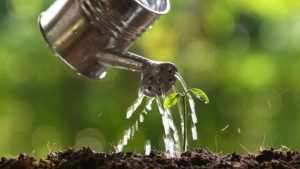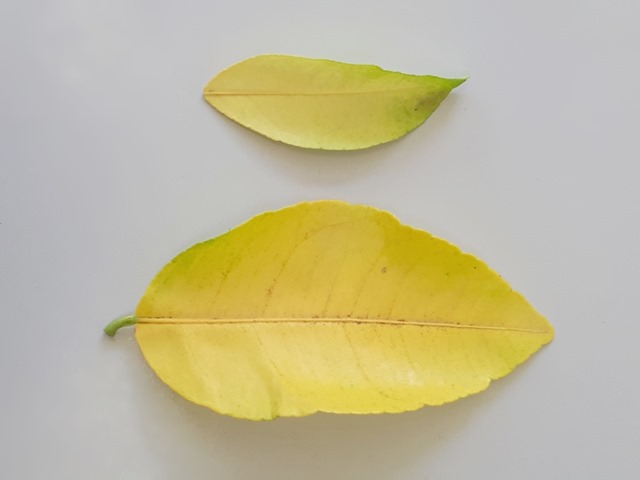Lemon trees are small evergreens with bright, green leaves. The leaves of these trees are aromatic, small, and green in color. Sometimes, the leaves might turn yellow. It might look like a natural process to cope with the climate. But lemon tree yellow leaves is a severe disorder. This discoloration or paleness is indicative of chlorosis or other diseases.

Apart from leaf discoloration, the tree can have split citrus fruits. Besides, the health of the plant itself can get compromised. So, you have to understand the main cause of lemon tree yellow leaves. And ensure sufficient remedy to bring back the greenery on this delightful tree. Have a look at some of the causes that trouble the leaves. Do take the corrective measures to keep the lemon juice flowing:
Table of Contents
Changing seasons impact the tree’s health
Citrus trees grow well in subtropical climates with sufficient warmth. However, these plants can have deciduous root stocks. So, they can hibernate in the winter months and lose nutrients. You can keep the roots watered, but the lemon tree yellow leaves do appear. It is a natural occurrence in this season due to reduced nutrient intake. So, even if the yellowish leaves fall, do not worry.
In spring, the temperature turns warm, and new growth starts to happen. You can add fertilizers to assist this process in increasing the harvest volume. But in summers, the leaves can turn yellowish or white. They suffer sunburn, but this is a patchy happening, and the healthy leaves will be intact.
In cooler climates, the cold winds slow down nutrient absorption by roots. So, you have to protect the citrus plant with plastic, a hedge, or a screen. It will stop the green leaves from becoming pale.
Pest infection is a major concern
Insects and mites love the lemons as much as humans. They suck on the sap and damage the leaves, causing yellow spots. Large patches of leaves and stems can eventually turn yellow. Check the underside of the green appendages to identify the parasite. You will also notice ant lines along the stem if there is a pest infection. Citrus aphids, blackfly, leaf miner, and psylla are the major irritants.
The plant also attracts lemon butterflies, mealy bugs, nematodes, and fruit-sucking moths. The aphids can be hosed off or squashed with ease. But for bugs and other pests, you have to rely on spray oil. Choose a horticultural variety and follow the instructions on the can or container.
Be careful and knock off the green bugs into soap water. Some pests squirt a liquid, which can be very toxic. So, wear protective sunglasses and reduce the pests and ants with this simple remedy.
Poor nutrition causes lemon tree yellow leaves
Lemon leaves turn pale and yellow due to deficiency in crucial nutrients. Such plants have a deficiency in iron, magnesium, zinc, or nitrogen. The solution to the problem is to get the root zone soil tested. You will know about nutritional availability, absence, or absorption defects.
Sometimes, you have to feed plant food spikes to solve this issue. But if the pH value is above 7.0, the alkaline soil needs correction. You can add Soil Sulfur or Iron Sulfate, or even change the soil. But for iron deficiencies, rely on soluble chelated iron as a quick fix. This chemically altered supplemented fights off chlorotic foliage (yellow leaves). These products are available at any horticultural center, hardware shop, or online store.
Watering issues
The watering process for lemon trees varies with the season. Also, you cannot leave the soil too dry or too wet. Dry plants do not get sufficient nutrients, and the pale leaves fall off. Check the ground after watering to see if it is soaking or not. If it takes too long for the soil to soak, then use a soil wetting agent.

On the other hand, overwatering is also a significant concern. Do not leave the lemon roots wholly soaked in water. If the drainage is poor, you have to change the pot or mix some dry soil. Make sure indoor plants do not have water pools inside the container. And water regularly to help leaf growth.
Weed attack leads to lemon tree yellow leaves
Lemons grown in the garden or containers are susceptible to weed attacks. The first step is to keep the pot clean from weed and other foliage. But for garden plants, you have to clear all the grass around the trunk. You might also see weeds growing as creepers around the lemon tree. Please remove those too.
After clearing the weeds, cover the soil in 2 to 5 cm. of aged manure and organic, coarse mulch. Make sure the mulch is kept away from the tree’s trunk. This simple maintenance task will produce more lemons and prevent chlorotic leaves.
Root defects weaken the whole tree
The roots can rot or get damaged due to pests or overwatering. You can see that the plants with lemon tree yellow leaves disease become very dry. The discolored foliage falls off, and the plant loses its earlier lush, green vibrancy. You have to dig around the roots and see if the roots are solid, healthy, and white under the soil.
In this condition, there is no root defect, and nutrients enrich the plant. But if the roots are black, brown, or slimy, then they are rotting. Sometimes, the container might be too small, and the roots outgrow their space. In either case, you have to shift the plant into a larger, spacious container carefully. Also, select a reliable potting mix and add about 10% compost by volume. Also, growing dwarf lemons in a large pot will make them thrive in the long run.
Fertilizers prevent lemon tree yellow leaves

Like humans, trees have to digest the right food in the right amounts. Besides, citrus plants are very demanding of such nutrients. Apart from grass trimmings and compost, the trees require certain nutrients. Choose high nitrogen feed for the summertime. Water the plant and spread the fertilizer in soil and water again. In winters, switch to a citrus-specific liquid spray for the leaves. Make sure it has diluted micronutrients with half-strength. Alternatively, you can also spread winter-specific feed in the soil in the right quantity.















